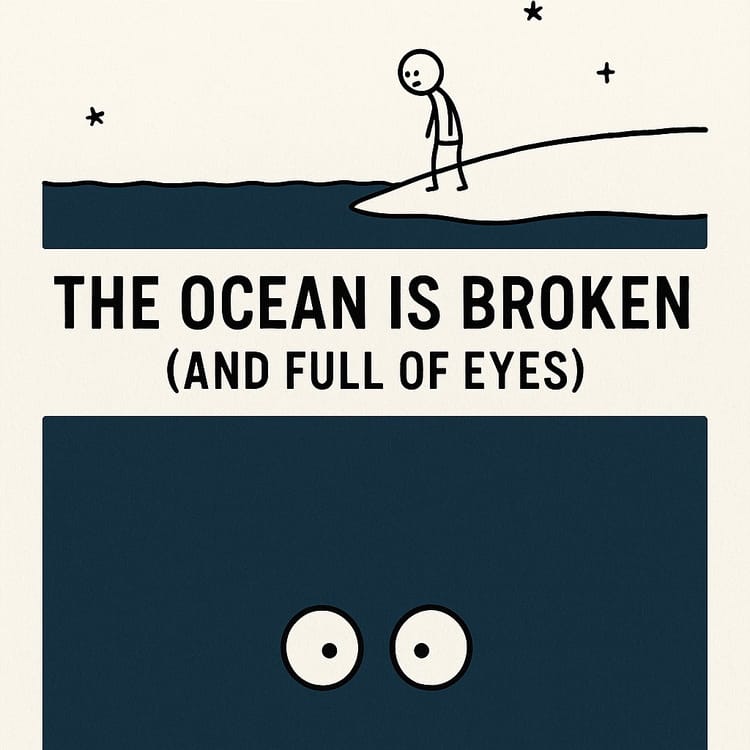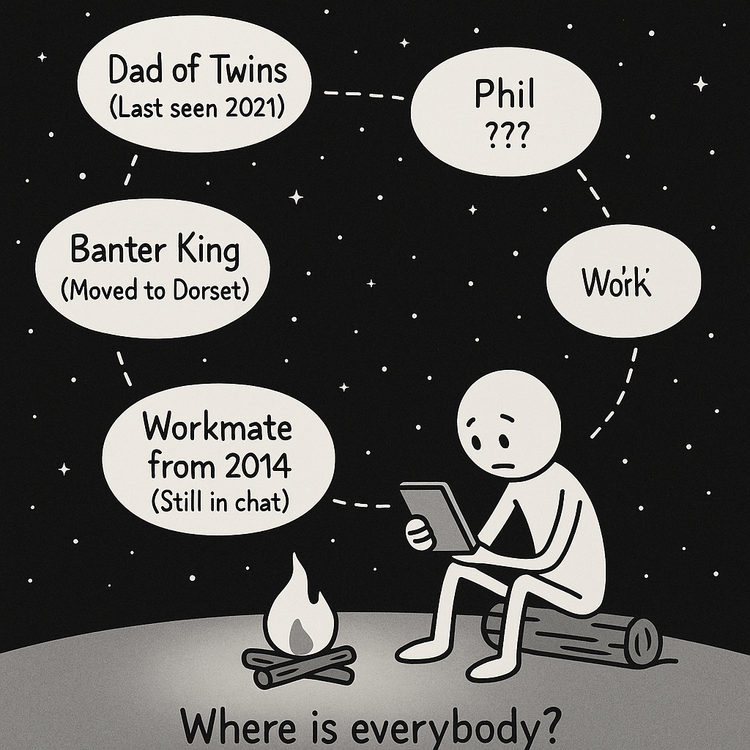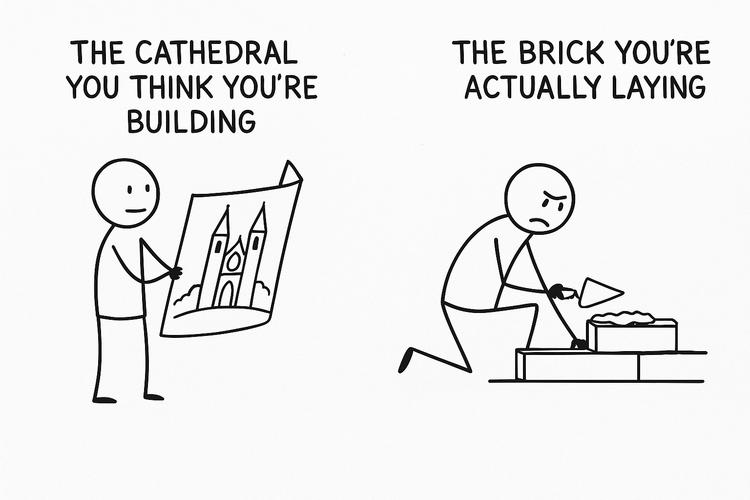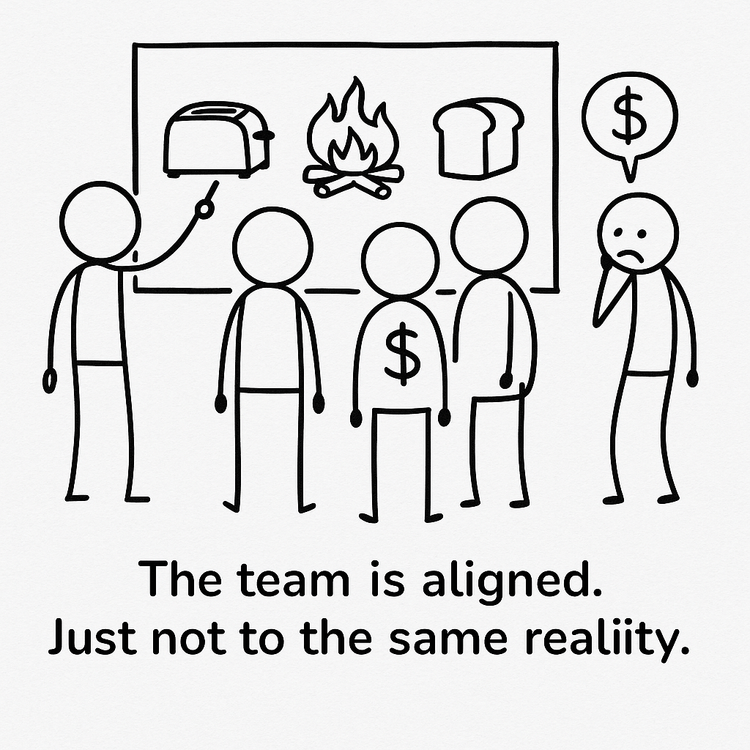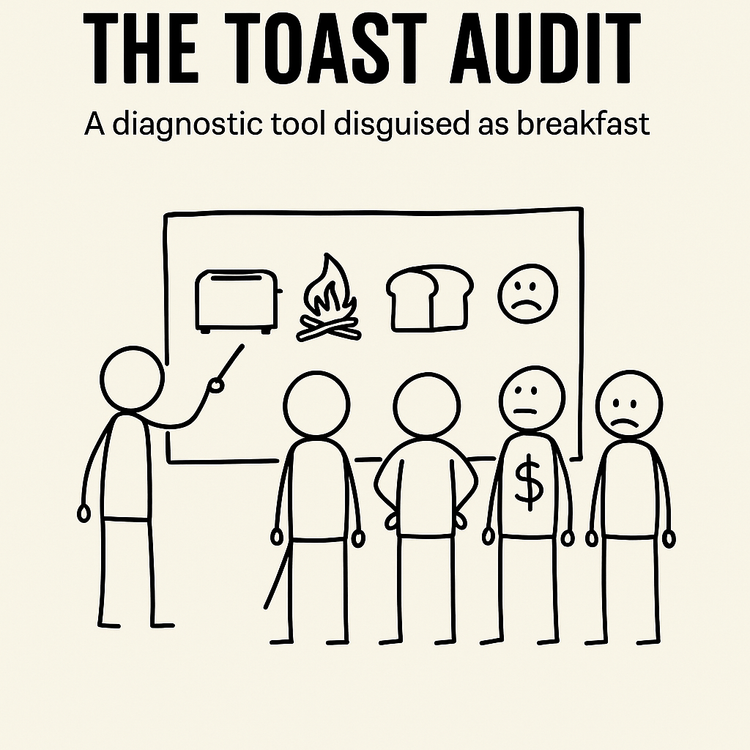How to Build a Shared Model (Without a Workshop or a Breakdown)

Read The Toast Series — 6 posts about systems, sabotage, and why your good plan broke before the meeting ended.
Explore the full series →
← Previous: The Toast Archetypes
→ Next: The Toast Audit
Let’s Start With a Horrible Truth
Most teams don’t break because of bad ideas.
They break because everyone brought a different map…
and no one noticed until they were halfway through the forest.
This isn’t about alignment (we already dismantled that lie).
This is about shared models.
And not in the “design thinking” workshop poster sense.
I mean the simple, hand-drawn, slightly embarrassing sketch of
“Here’s what I think we’re actually doing.”
It’s the one thing no one makes.
And the one thing that can save your next project.
What Is a Shared Model?
A shared model is not a roadmap.
It’s not a slide deck.
It’s not your Notion page of bullet points everyone pretends to read.
It’s this:
A visual, collective, and actively agreed upon understanding
of what you’re building, how it works, and why it matters.
Without it, you get:
- Misunderstood goals
- Conflicting assumptions
- Surprise blockers
- And meetings where everyone says “yep” but no one means the same thing
With it, you get:
- Clarity
- Confidence
- Accountability
- And less toast on fire
Why You’re Not Doing It Already
Because it feels awkward.
Because it feels slow.
Because you think you don’t need it.
And because in the back of your head you’re thinking:
“Surely everyone already gets this…”
Spoiler: they don’t.
They never do.
People carry mental models quietly.
And when those models don’t match, the work collapses — quietly, politely, and expensively.
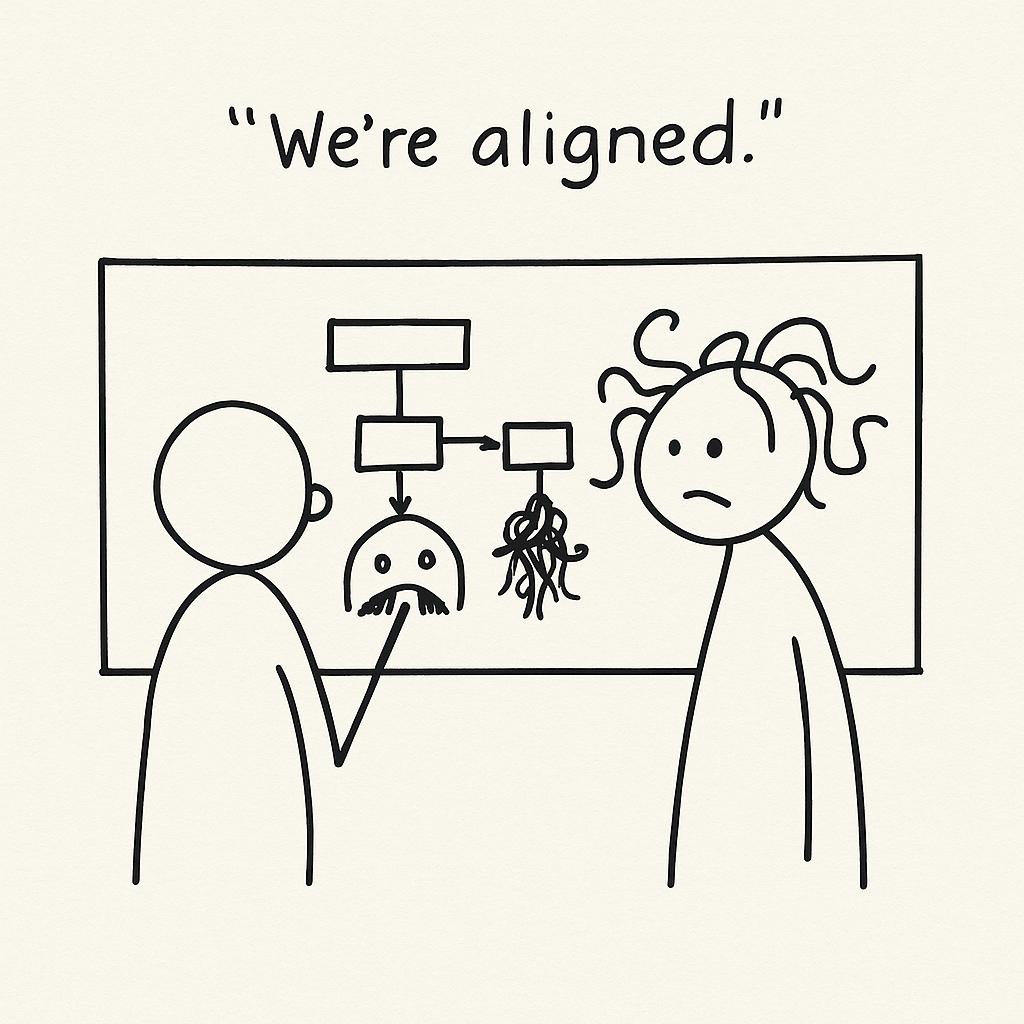
How to Build One (Badly but Effectively)
1. Draw First, Explain Later
Get everyone to draw what they think the project/system/thing actually is.
- Use stickmen.
- Use arrows.
- Use boxes labelled “???”
